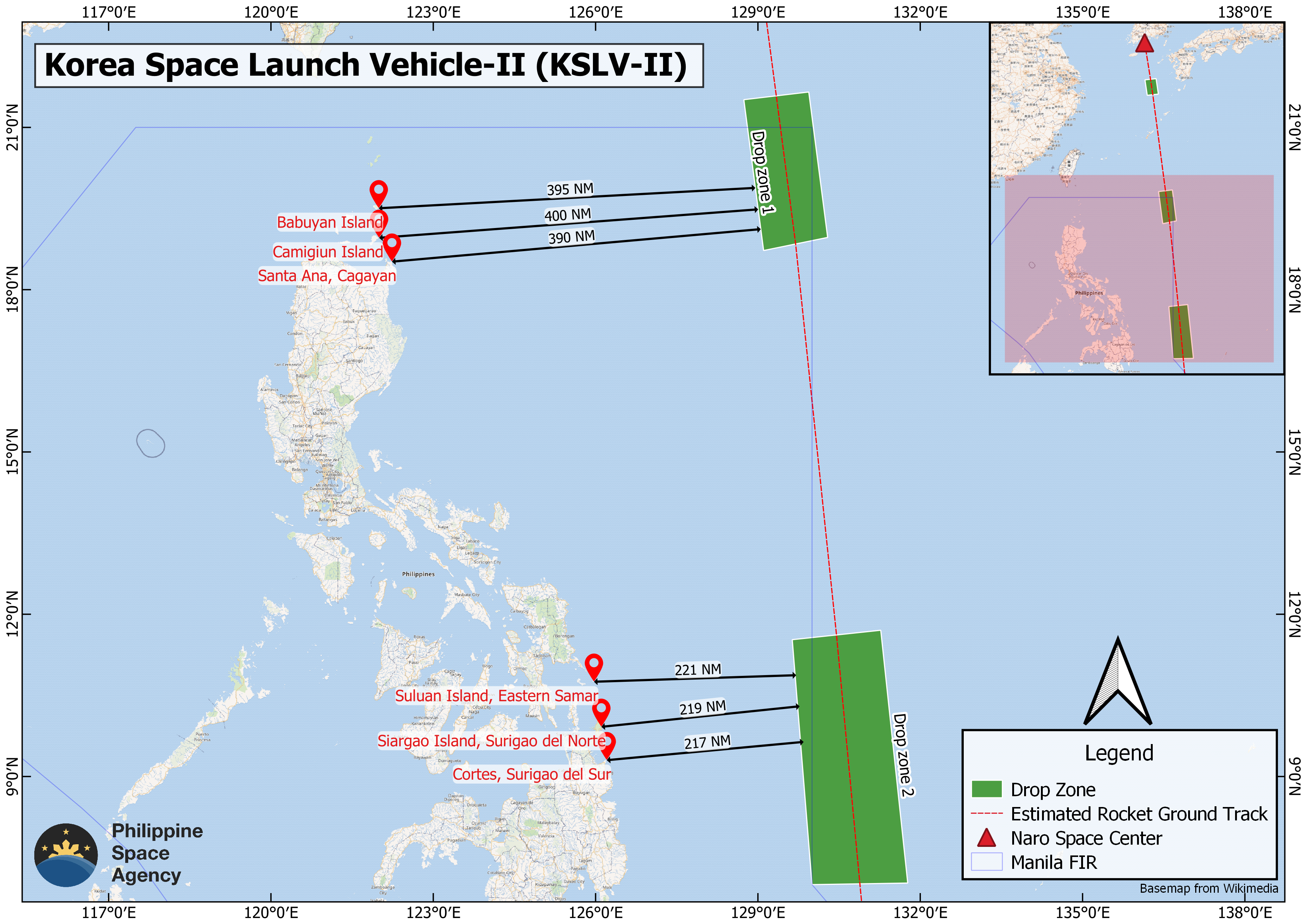The Philippine Space Agency (PhilSA) is monitoring debris from the Korea Space Launch Vehicle-II confirmed to have lifted off at 5:24 PM PhST on Thursday, 25 May, from the Korea Aerospace Research Institute’s (KARI) Naro Space Center in Goheung South Jeolla.
Unburned debris from the rocket, specifically, the payload faring and the second stage, are projected to have fallen on two (2) drop zones in Philippine waters. The payload faring, designed to separate from the rocket within 20 minutes from launch, is estimated to have dropped at an area approximately 400 NM (722 km) from Sta. Ana, Cagayan, Camiguin Island, and Babuyan Islands. The rocket’s second stage, designed to detach from the launch vehicle within 18 minutes after lift off, is predicted to have fallen around 217 NM (401 km) from Cortes, Surigao del Sur. While debris from KSLV-II is not expected to fall on any land feature or inhabited area, parts of it may float and drift toward the shore in the future.

DROP ZONE 1
21 30 43N 128 44 09E
21 39 15N 129 56 35E
18 57 56N 130 17 29E
18 49 24N 129 06 17E
DROP ZONE 2
11 31 43N 129 38 03E
11 42 11N 131 16 31E
07 01 45N 131 46 19E
06 51 17N 130 09 09E
The Republic of Korea provided sufficient and detailed information about the launch and debris drop zone coordinates prior to the aerospace activity. PhilSA has verified the information through coordination with the Civil Aviation Authority of the Philippines (CAAP), who received the notice of the launch issued by the Republic of Korea. PhilSA immediately issued an advisory to relevant government authorities before the launch to warn of the risks of falling debris to ships, aircraft, fishing boats, and other vessels passing through the drop zone areas, and recommended the issuance of warnings and temporary restrictions.
In case of debris sighting, PhilSA advises the public to immediately inform local authorities for appropriate action, and avoid retrieving the debris. Rocket debris that may contain remnants of toxic substances such as rocket fuel. In cases when contact with debris is unavoidable, personnel protective equipment (PPE) is recommended.
PhilSA will continue to monitor the possible re-entry of the rocket’s upper stages to Earth’s atmosphere.
About KSLV-II
KSLV-II is South Korea’s first locally-developed rocket that can carry up to 1,900 kilograms of payload into space. Thursday’s launch brought eight (8) satellites in orbit, including NEXTSAT-2 – an Earth observation satellite that uses a synthetic aperture radar (SAR) instrument, developed by Korea Advanced Institute of Science and Technology’s Satellite Technology Research Center (KAIST SaTRec). The satellite’s mission includes demonstration of its X-band radar technology, among other space technologies.




